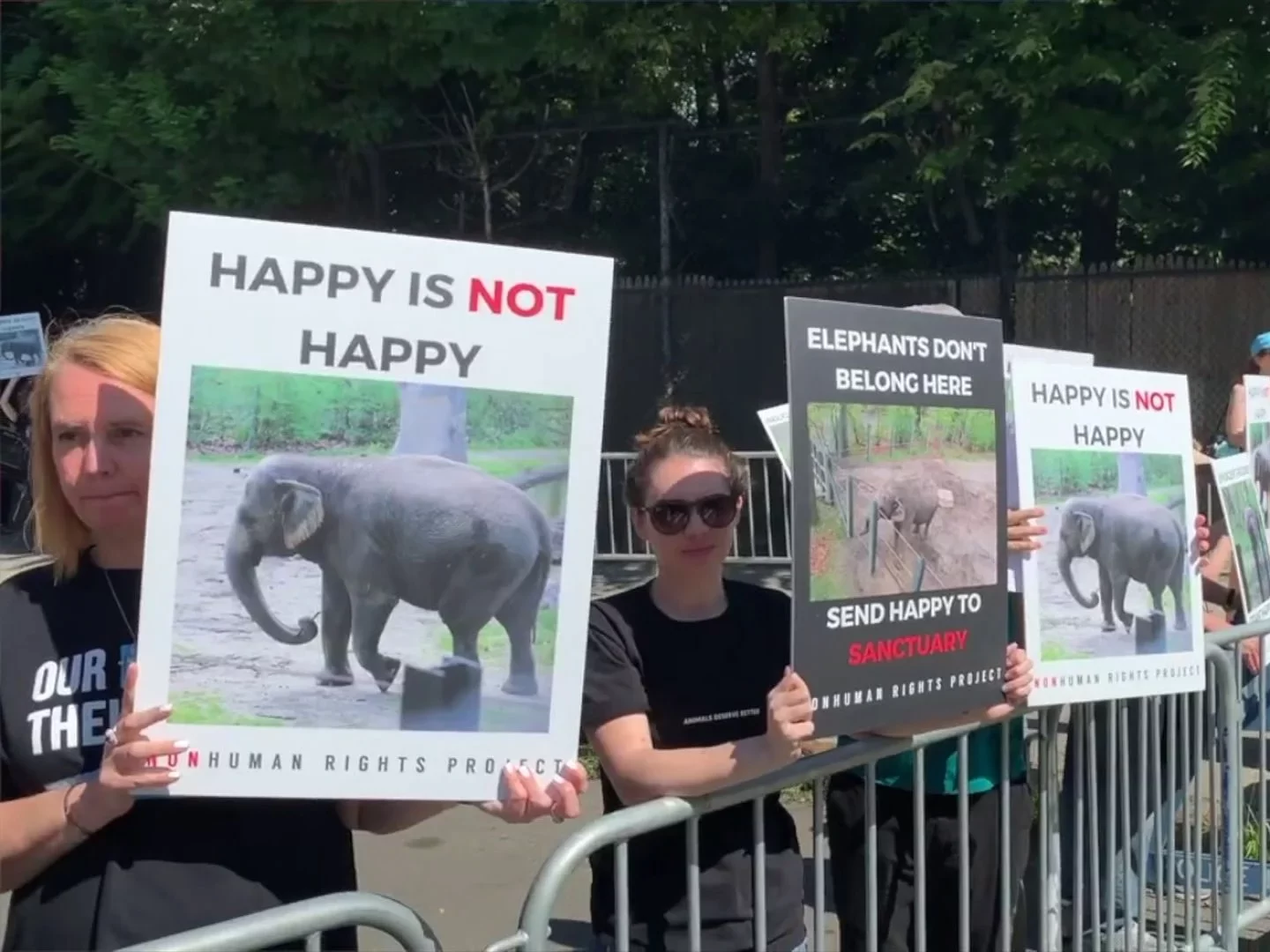Animal rights activist groups have employed a series of outlandish campaigns over the years in a thus far unsuccessful attempt to “dismantle” animal agriculture, including exploiting the courts to forward their cause. Groups like Animal Legal Defense Fund (ALDF) have partnered with law schools to indoctrinate their objective of granting legal rights to all animals into more and more prospective lawyers. The Animal Ag Alliance issued reports from several animal rights conferences in 2022, including two that specifically covered animal law and the legal arguments animal rights groups intend to weaponize against animal agriculture this year.

Animal theft and using “undercover videos” to support lawsuits
In a recent Utah case, two activists from Direct Action Everywhere (DXE) were acquitted of all charges after trespassing and stealing piglets that they claimed to be rescuing from “certain death.” Wayne Hsiung, founder of DXE, used an “undercover video” taken during the crime in his testimony as “evidence” that the two men were “there just to give aid to dying animals.” This is not the only tactic animal rights extremists are using to drag animal agriculture into court. In one session at ALDF’s 2022 Animal Law Conference entitled “Opportunities lawyers face today in advocating for farmed animals,” it was revealed that animal law advocates are using arguments in court such as unfair competition, false advertising, market distortion, and fraud to pressure retailers to cut ties with farms, processors, and other companies allied with animal agriculture. Piper Hoffman, senior director of legal advocacy at Animal Outlook, explained their partnership with ALDF in suing a chicken hatchery for alleged unfair competition. Hoffman bragged that a large retailer “cut its ties” with the hatchery shortly following the release of “undercover videos” of alleged animal cruelty filmed by trespassing activists. She further highlighted the importance of “undercover videos,” claiming the formula for “bringing animals to justice when the government won’t” is the strategic combination of “undercover investigations” and legal advocacy.
Linking CAFOs to negative human and environmental health impacts
Joyce Tischler, professor of practice at the Center for Animal Law Studies at Lewis & Clark Law School spoke on the alleged detrimental effects of confined animal feeding operations (CAFOs) on environmental and public health. In addition to her claims that CAFOs cause gastrointestinal problems, headaches, and lower home values, she insisted that CAFOs are an “environmental injustice” whose construction has an “evil” socioeconomic and racial motivation and alleged that the animal agriculture community builds CAFOs in low-income, black communities on purpose. She also accused animal agriculture of being “willing to harm low-income residents, people of black and brown color, in its constant pursuit of profit.” She concluded her presentation by encouraging animal law students to link legal precedents of CAFOs being charged in court as historical support to their cases. She rallied attendees before stepping offstage, declaring: “Let’s bury this industry.”
Watching the outcome of the Prop 12 Supreme Court case
During ALDF’s 2022 Animal Law Symposium, Rebecca Clary, senior staff attorney at the Humane Society of the United States (HSUS), shared her thoughts on the ongoing California Proposition 12 case, stating that “No matter how well this case ends up going, the trend towards a more humane future is already there.” In her presentation, Clary made three legal arguments that justify her support of Proposition 12. She first claimed that states cannot discriminate against products when regulating commerce, meaning states can’t treat in-state producers in a way that is different than out-of-state producers under the Dormant Commerce Clause. “Extraterritorial regulation” was another legal argument for Proposition 12, indicating that states cannot regulate commercial transactions that occur wholly outside their borders. Lastly, Clary claimed that states “cannot impose a substantial burden on interstate commerce,” which she claimed that the pork community is trying to do. She contended that Proposition 12 was a “neutral in-states restriction” and “nondiscriminatory” because it is “applying only to sales within the state of California.” She alleged that a few large commercial pork farmers have already agreed “to comply with Proposition 12 without any major effects on their bottom-line profit.” When asked why these large farms would comply when there is so much pushback from the pork community, she stated that several of these companies “see the writing on the wall in terms of consumer preferences,” referring to an allegedly growing market for more “humane” products.
Garnering media attention for their cause
Caitlin Foley, staff attorney with ALDF, told attendees, “Our job as animal lawyers and advocates is to use the industry’s misdeeds as an opportunity to talk about what they’re doing and sensitize the public to what this industry really is all about.” She continued to encourage activists by stating, “Media attention to animal welfare has negative effects on the demand for meat, so increasing media attention to animal welfare issues triggers consumers to actually purchase less meat, rather than reallocate expenditures to competing products.” Camille Labchuck, a Canadian animal rights activist, hoped that the “Barbara Streisand Effect” will come into play on “ag-gag” laws worldwide, asserting that the more the animal agriculture community pushes back on “undercover videos,” the more that the media will focus on them. There is expected to be a continued push for trespassing and illegal recording as these “undercover investigators” continue to be praised for their “sacrifice” to the animal rights movement.
Deconstructing legal personhood

One way that animal lawyers are beginning to deconstruct legal personhood to fit their definition are through writs of habeas corpus. Elizabeth Stein of the Nonhuman Rights Project claimed that writs of habeas corpus were once issued for individuals whose right to bodily liberty was not yet recognized. She compared her mission at the Nonhuman Rights Project with the landmark case Somerset v. Stuart, which involved an enslaved black man who fought for his right to bodily liberty in the eighteenth century. She equated this radical case to all animals whose, she claimed, bodily liberties are similarly not recognized by the law but deserve legal personhood and advocates in court. She further stated her case by claiming, “Black’s Law Dictionary is clear that you don’t have to be a human being to be a legal person, that as long as you have a right you are a legal person and that you don’t have to have the capacity to bear duties in order to be a legal person.” Stein claimed that after years of searching for a loophole in the United States judicial system, she found “New York to be the most favorable jurisdiction for our filing our first habeas corpus petition” because it recognizes common law habeas corpus and an unrelated third party can bring the action. Christopher Berry, managing attorney for ALDF, argued various historical cases that he claimed set precedents for legal personhood, such as with the case of Pablo Escobar’s hippopotamuses, “Happy” (an elephant from the Bronx Zoo), and “Justice” (a horse from Oregon). He argued that legal personhood is not “the rights we normally associate with being an adult human, but rather, it’s something that can be taken as really any sort of size and shape and be put together as appropriate.”
A threat to the front lines of our food supply
By employing the courts, animal law activists are predicted to be an increasing threat to animal agriculture in 2023. At the Animal Agriculture Alliance, our goal is to safeguard the future of animal agriculture by identifying emerging threats and providing farm security resources to help farmers protect themselves and their animals. For more information about the Alliance’s work monitoring activism, visit www.animalagalliance.org/initiatives/monitoring-activism.
All posts are the opinion of the author and do not necessarily represent the view of the Animal Ag Alliance.







